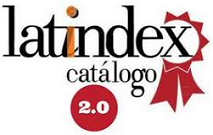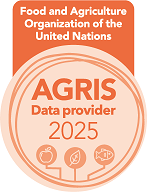Efecto del sorgo con diferentes niveles de proteína en el rendimiento productivo del pollo de engorde
Palabras clave:
Grano de cereal, Rendimiento productivo, SorgoResumen
Sorghum is growing from a simple commodity used for feed and fodder to a valuable resource for animal nutrition (Ronda et al., 2018). As such, it can be an alternative for maize in poultry diets. From a nutritional standpoint, sorghum has a great nutritional value, similar to maize (Fernandes et al., 2014), but its digestibility can be impacted by kafirins, an anti qualitative substance that comprises up to half of its protein content (Ali et al., 2009; Abdelbost et al., 2023). Therefore, this study was conducted to evaluate broiler chicken diets based on sorghum with different protein content on the growth performance of broiler chickens from 1 to 21 days of age. A total of 448-day-old Ross 308 (AP95) male chicks were randomly distributed into 4 treatment groups (maize control 7.11 % (A), sorghum 7.84 % (B), sorghum 9.06 % (C), and sorghum 9.66 % (D)) with 8 replicates of 8 birds each, and housed in metabolic battery cages. The experimental diets were comprised entirely of either sorghum or maize as an energy source and soybean meal and fed in mashed form. For the sorghum treatments, no energy adjustments were done. Growth performance parameters, feed intake (FI), body weight gain (BWG), and feed conversion ratio (FCR) were evaluated. The residue normality of the data was determined by the Shapiro-Wilk test, and the ANOVA (P<0.05) was performed. Means were compared with the control group (maize treatment) by the Dunnett test. As the level of sorghum protein increased, FI was enhanced (A - 951.02g × B - 1013.52g × C - 1047.61g × D - 1054.15g) (P<0.001), as also reported by Liu et al. (2015). No statistical differences were observed in BWG from broiler chickens fed with sorghum treatments compared to the maize control group (P>0.05). Broiler chickens fed sorghum diets exhibited higher FCR than the control group (P<0.001), however, the FCR value was greater in the sorghum with the lowest protein (A - 1.245 × B - 1.318 × C - 1.297 × D - 1.299). Moss et al. (2020) also showed broiler chickens fed with sorghum had greater FCR in comparison to maize fed. In conclusion, sorghum with different levels of protein impacts broiler chicken growth performance.
Descargas
Publicado
Cómo citar
Número
Sección
Licencia
Derechos de autor 2025 Sociedad de Medicina Veterinaria del Uruguay-Facultad de Veterinaria, Universidad de la República

Esta obra está bajo una licencia internacional Creative Commons Atribución 4.0.











